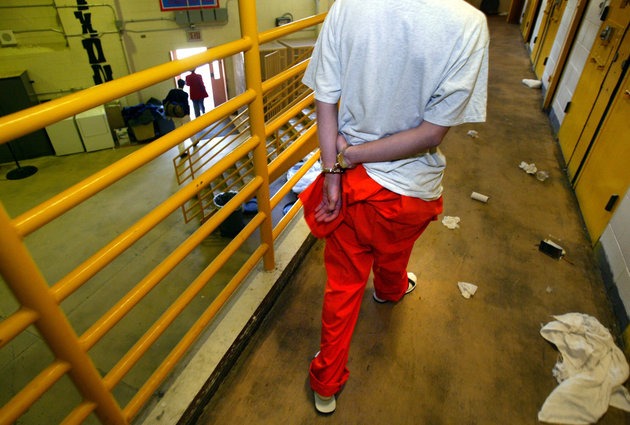Kids Who Face Criminal Charges Are More Likely To Die Young

Erin Schumaker, The Huffington Post
The horrors juveniles suffer in adults prisons — including high recidivism rates and the abuse they suffer at the hands of correctional officers and fellow prisoners — has been well-documented, in this publication and others.
But sadly, these juveniles’ lives are in danger long before they ever reach a cell block. Young offenders who are transferred to adult court are three times more likely to die early than someone of the same age in the general population, according to a longitudinal study published this month in the American Journal of Preventative Medicine.
“Any involvement with the criminal justice system increased the chance of mortality,” lead study author Matthew Aalsma, an associate professor of pediatrics at Indiana University, told The Huffington Post.
The more severe the punishment a youth offender faced, the greater the likelihood he would die early, Aalsma explained. Most of the time, he noted, the kids died by homicide.
The study compared electronic criminal justice records and health records of almost 50,000 10- to 18-year-old offenders in Marion County, Indiana, between 1999 and 2011, finding a direct link between involvement in the justice system and early death.
The study broke criminal justice involvement into four categories of increasing seriousness: arrest, detainment in a country-run detention center (for an average of two weeks), incarceration, and transfer to adult court.
Among these groups, arrested youth had the lowest mortality rates and were 1.5 times more likely to die early than kids of the same age who had never been arrested. Detained offenders faced even worse odds, followed by those who were incarcerated. Youth transferred to adult court were at the greatest risk, proving three times more likely to die young after being released than the general population.
For black men, the association was especially strong. Of the 518 individuals who died during the study period, 56 percent were black and 84 percent were boys and men. The most common age of death was between 19 and 21 years old.
“Simply being involved in the criminal justice system changes how a youth sees himself, how a community sees itself,” Aalsma said. “Each time you’re taken out of the community and put in detention, incarcerated, jailed, it loosens the social bonds,” he said. “Think about a 16-year-old. He’s not going to school. If he was in therapy, he’s not going to therapy anymore.”
According to a 2011 report by the National Center on Juvenile Justice, roughly a quarter-million juveniles are transferred to adult court each year. In 2007, for example, 247,000 juveniles in the U.S. ended up in adult court because of state age jurisdiction laws (such as statutes in New York and North Carolina that require 16- and 17-year-olds to be considered adults in criminal cases). Another 8,500 juveniles were transferred to the adult system based on transfer law — judicial decisions made because of the nature of the crime or at the discretion of a prosecutor — that same year. Nine states currently prosecute 17-year-olds as adults no matter the charge.
There’s a pervasive misperception that juvenile detention is rehabilitative, when in reality, it usually has the opposite effect. A week in detention, six months in prison or years in the adult system can have a long-tail effect, making it that much harder for a juvenile offender to move on after being released.
“We lock them up and then we convince ourselves it’s good for the kids too,” Jeffrey Butts, the director of the research and evaluation center at John Jay College of Criminal Justice, told the Center for Public Integrity in 2013. “There’s nothing inherent about locking someone up and controlling their movement that is rehabilitative.”
There are a few groups trying to make a difference. One is the Juvenile Detention Alternative Initiative, which favors close supervision and community-based monitoring support systems to detention for youth who pose little or no risk to public safety. The program began in Baltimore two decades ago, and has expanded its reform efforts to 300 counties across 40 states.
Aalsma hopes the new study will shed light on what is ultimately a distressing public health crisis. “I don’t know how to make an emotional plea with a research study,” he said. “We clearly need to do a better job in caring for our youth.”












